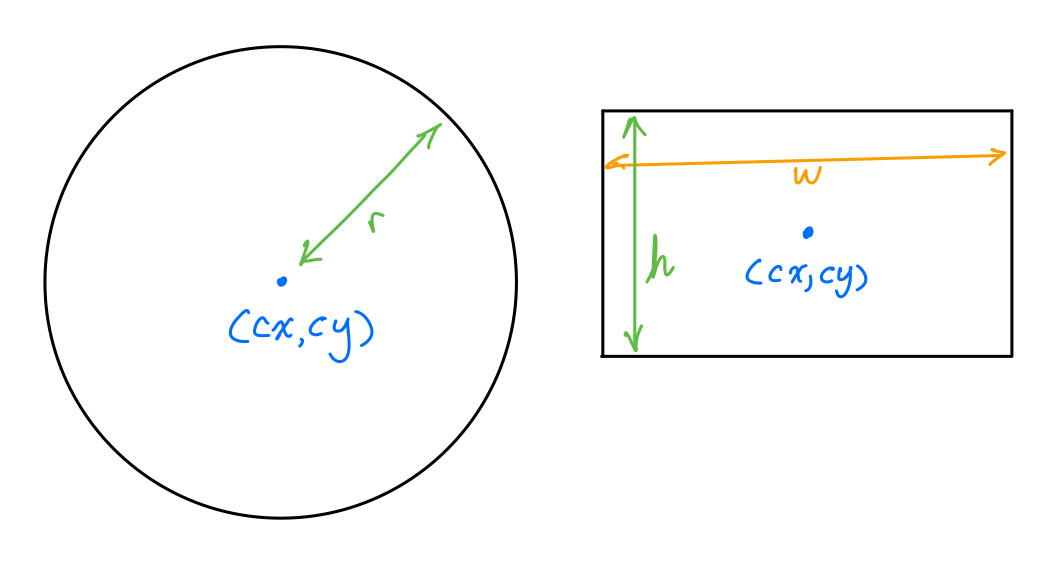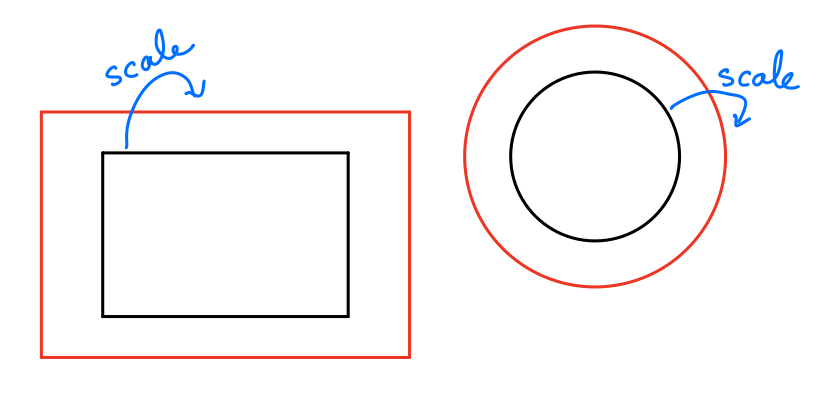Lecture 25
Object-oriented Programming
MCS 260 Fall 2021
Emily Dumas
Reminders
Custom types in Python
In Python, classes are the way to define your own types. A value of that type is an object or instance.
Analogy: class "Cat", instance "Mr. Mittens".
Objects bundle together data and behavior (things you can do with a specific sort of data).
Sample Problem
Suppose we are writing programs that will work with geometric objects in the plane, such as circles and rectangles.
How should we represent these objects as numeric data?
Representation

But what type should we use? list, tuple, dict?
Classes
We can create our own type called Circle, using a class definition.
By convention class names LookLikeThis (capitalized words with no separator).
Classes are can contain internal variables, called attributes.
Classes can contain their own functions, called methods.
Circle() will create a new object of type Circle.
Class docstrings
The first statement inside a class definition can be a string literal.
If so, that string is the class's docstring.
Acting on objects
Now imagine that our program needs to change the size of the objects, while keeping them in the same position (e.g. increase all sizes by 25%.)

How might we do that?
Function approach
We could create functions that modify the objects:
circle_scale(circle,factor)
rectangle_scale(rectangle,factor)
Methods
Notice the functions we just defined take an object as the first argument and modify it in some way?
This is so common that there is a language feature just for this purpose.
A method is a function that is defined inside a class, and which is then attached to every instance of it.
We could e.g. define a scale method so that we can call C.scale(1.25) to scale an object C of type Circle.
Important note
Method calls look like this: C.scale(1.5)
What happens is: Circle.scale(C, 1.5)
Python adds the object to the beginning of the argument list!
__init__
For a class Circle, when we call Circle() we are actually running a special method called the constructor. It sets up a new object for us.
There is a default constructor that doesn't do very much.
We can define our own constructor by naming a method __init__(self,...).
__str__
When Python needs to convert an object to a string, it calls the __str__(self) method, if it exists.
Define this and return a string that is a human-readable representation of what the object is.
References
- In Downey:
- Chapter 17 discusses classes, objects, and methods
Revision history
- 2021-10-20 Initial publication
- 2021-10-20 Correct project 3 release date